

Old Town Road: Traversing the Sacred Mountains of the Kii Peninsula
|
The Kii Peninsula is the name of the largest peninsula on mainland Japan, encompassing much of Wakayama, Osaka, Nara, and Mie prefectures. Its name is derived from the Kii Province, an old province that was made up of Wakayama and the southern part of Mie prefecture. The Kumano Kodo (熊野古道), translated literally to ‘old roads to Kumano’, is the name of a network of trails across the Kii Peninsula, traversing across the rugged, mountainous landscapes of the region.
As the name suggests, these trails are old; for over a thousand years, pilgrims of all walks of life and every strata of society would follow these paths to get to the three grand shrines of Kumano, known collectively as the Kumano Sanzan (熊野三山). These are the Kumano Hongu Taisha (熊野本宮大社), Kumano Hayatama Taisha (熊野速玉大社), and Kumano Nachi Taisha (熊野那智大社). These shrines are thought to be powerful places of worship, although they each have unique charms that set them apart from each other. The Kumano Hongu Taisha has a massive torii gate at its entrance which, standing at 33 meters tall, makes it the biggest torii gate in the world. The historic Kumano Hayatama Taisha houses various national treasures as part of its collection, including artefacts and offerings that have been brought over by pilgrims on the Kumano Kodo. At Kumano Nachi Taisha, Japan’s tallest single-tiered waterfall serves as an awesome natural sight for visiting pilgrims to stop by. With beautiful architecture and landscape ensconced with the spiritual power of the region, it is no wonder that countless emperors, aristocrats, and religious pilgrims alike have hiked along the well-trodden trails of the Kumano Kodo to see the Kumano Sanzan. |
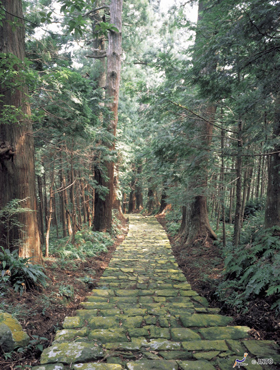 © Wakayama Prefecture/ JNTO 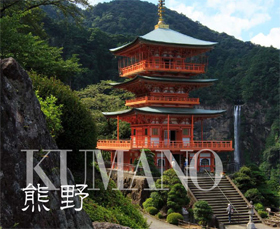 © Japan Up Close / JQR |
|
From the Kumano Sanzan, routes spread out to various other sacred sites on the peninsula, including Wakayama’s Mount Koya, Mount Yoshino and Mount Omine in Nara, and to the Ise Grand Shrine in Mie. Although the Kumano Kodo served as paths for pilgrims to access their places of worship, they were not known to be easy to traverse. Many of these routes were difficult and dangerous, and travellers often took weeks to make it from one point to another. As Japan developed, many of the old roads along the peninsula’s coastline have disappeared to make way for modern developments like cities and highways, but some of the trails that lead away from the sea and into the mountains have been preserved, allowing visitors today to walk in the footsteps of ancient travellers.
The Iseji route leads east from Kumano Sanzan, taking travellers further into Mie prefecture, to the Ise Grand Shrine. The Ise Grand Shrine, known as Ise Jingu in Japanese (伊勢神宮), is an ancient and sacred shrine that is arguably one of Japan’s most important shrines. Its Inner Shrine is said to have been established over 2000 years ago, and enshrines the Sun Goddess Amaterasu-omikami. Its architecture is uniquely Japanese, and the buildings of the shrine are rebuilt every 20 years with materials that are grown and harvested from the forests surrounding the area. It is a major center of pilgrimages, and was why the Iseji route in particular was so popular during the Edo period. Aside from the shrine, the views that this route afforded contributed significantly to its popularity as well. Much of the route hugs the eastern coast of the Kii Peninsula, and travellers in the past could enjoy panoramic views of bamboo forests, beaches, mountain passes, and rice fields on their travels. Today, paved roads and towns have been built over much of the Iseji route’s original coastal paths, but certain sections that lead away from the coast have been preserved. One of these preserved sections is the Magose Pass; this section measures over five kilometres, taking visitors through lush natural scenery over the pass. Another preserved section on the Iseji route is the Matsumoto-toge Pass. Like the Magose Pass, this trail through nature is well-preserved and is lined with many Jizo statues, which serve as guardians of children and of travellers. These passes are easy hikes that are suitable for beginners, but be warned that they have steep ascents that can leave hikers feeling breathless. However, the wide views of the Pacific Ocean and the vast beaches that line the coast are sure to refresh any weary traveller. Today, the entire pilgrimage route has been designated a UNESCO World Heritage Site, making it one of only two pilgrimage routes to be listed in UNESCO’s World Heritage List. Completing both this route and the other, the Camino de Santiago in Spain, will earn hikers the title of ‘Dual Pilgrim’ and a souvenir badge. The Dual Pilgrim programme was initiated by Tanabe City and Santiago de Compostela to promote the culture of pilgrimages and to spread the respect of cultural and spiritual differences. Whether you are looking for a spiritual retreat or a contemplative hike in nature, the Kumano Kodo is sure to provide a fulfilling experience for all visitors. If you are ever in Mie, do try visiting the preserved sections of the Iseji route for a trip back in time. This December, JCC will be shining a spotlight on Mie prefecture on our Facebook page. Stay tuned to learn more about the little-known charms of this prefecture! |
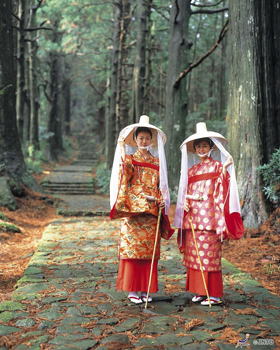 © Wakayama Prefecture/ JNTO 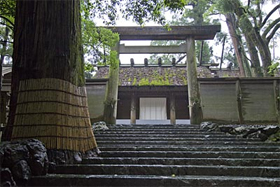 © AFLO 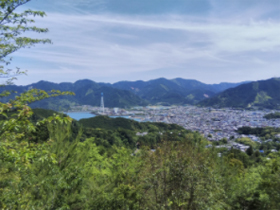 © photoAC 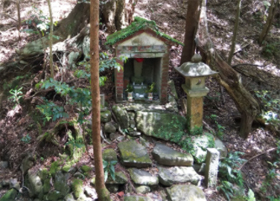 © photoAC 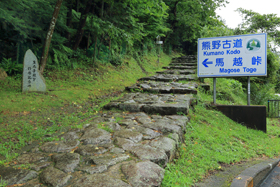 © Ken Ken/a.collectionRF/amanaimages |
Resources
|
Finding the roots of Japan. Retrieved 20 November 2020, from http://www.bbc.com/storyworks/travel/wakayama-prefecture/kumano-kodo |
|
Japan Creative Centre 4 Nassim Road, Singapore 258372 +65 6737 0434 / jcc@sn.mofa.go.jp https://www.sg.emb-japan.go.jp/JCC/ Nearest parking at Orchard Hotel & Delphi Orchard |
 |